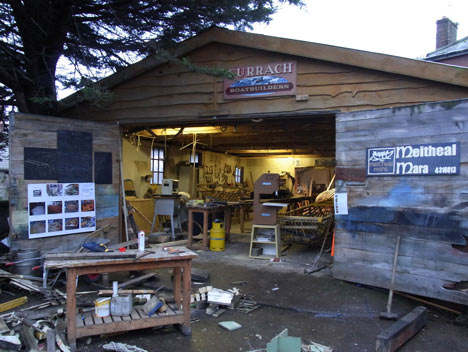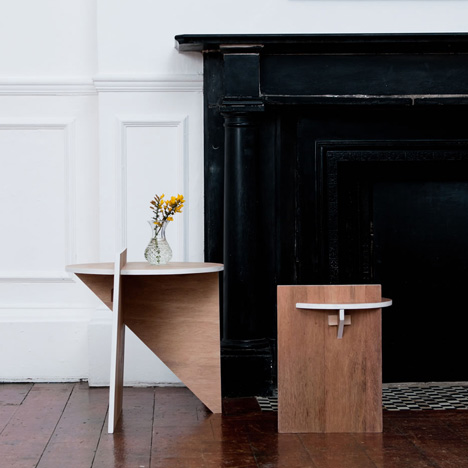
Origin part III - Contrast by BCXSY
Milan 2012: Eindhoven designers BCXSY worked with traditional Irish boat builders to develop this collection of stools, tables and bowls, which they'll present at Spazio Rossana Orlandi in Milan next week.
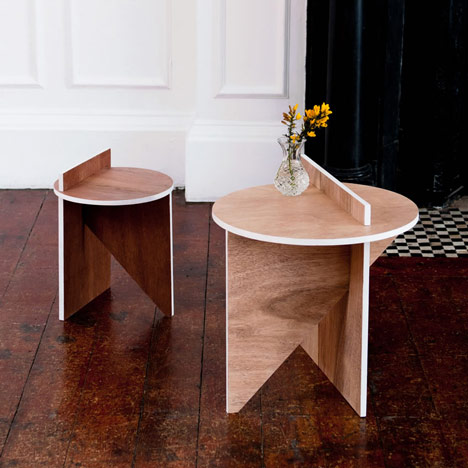
Boaz Cohen and Sayaka Yamamoto were invited by the Sirius Arts Centre to undertake an artists' residency at the Meitheal Mara boat-building culture and education centre in Cork.
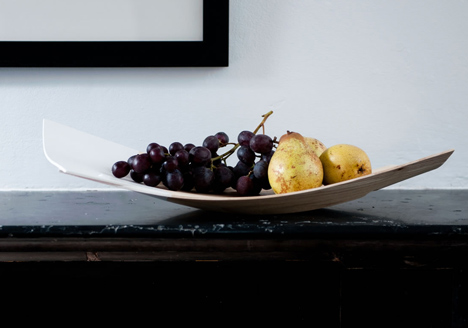
Called Origin part III - Contrast, the pieces draw on steam-bending, joinery methods and clamps that the pair observed at the boat yard.
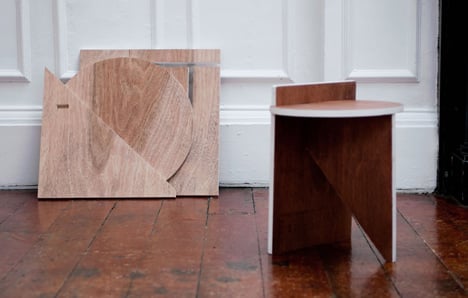
This is the third instalment in their Origin series of projects, working closely with skilled craftspeople to develop collections based on their techniques.
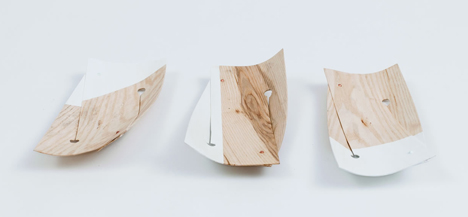
Last year they presented a collection of rugs woven by Bedouin women in Israel and in 2010 their first Origin project resulted in the acclaimed Join folding wooden screens made in collaboration with a Japanese joinery craftsman.
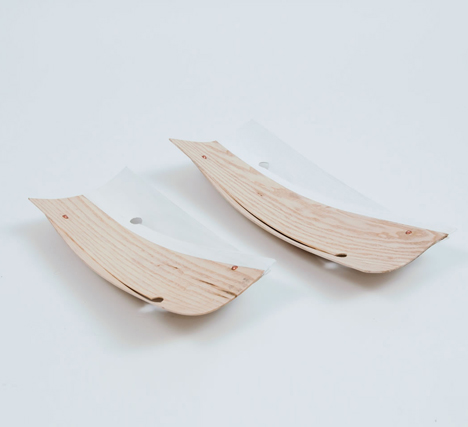
Read all our stories about BCXSY here.
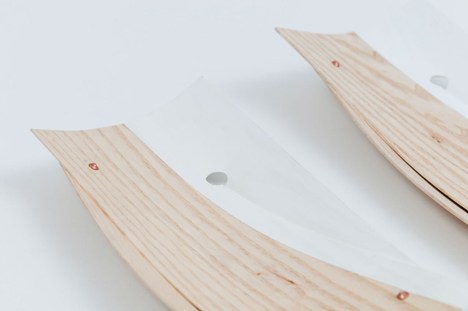
The Salone Internazionale del Mobile takes place from 17 to 22 April. See all our stories about Milan 2012 here.
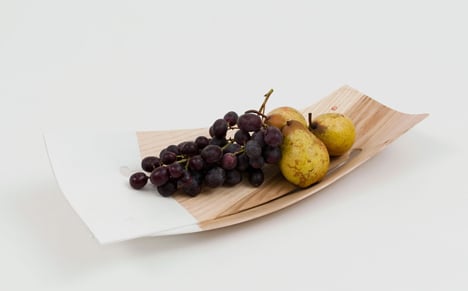
Here are some more details from BCXSY:
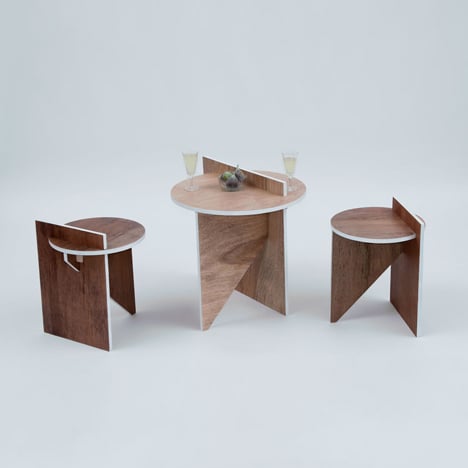
Origin part III: Contrast
Origin – our explorations into traditional crafts and techniques from a variety of backgrounds and disciplines.
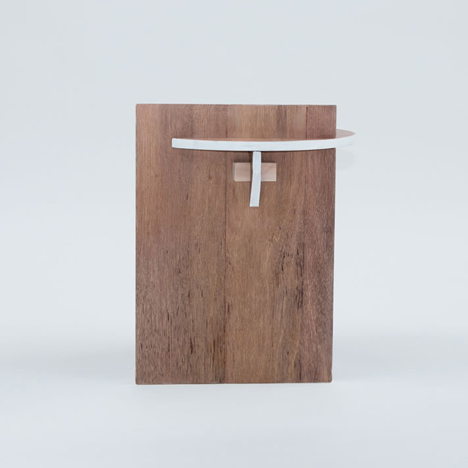
Meitheal Mara – (translated from Irish roughly as, workers of the sea or sea community) is a charitable maritime cultural and educational centre based in Cork City in the south of Ireland, who’s main goal is to preserve the craftsmanship of traditional Irish boat building.
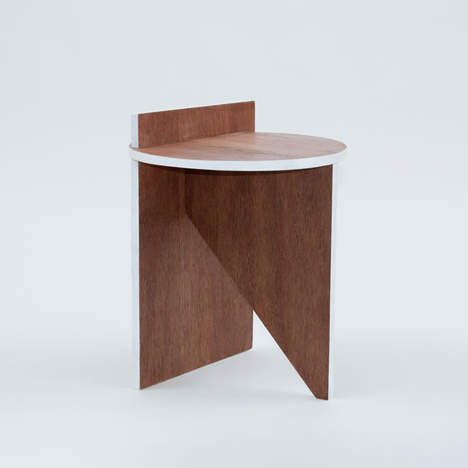
Contrast is the result of our collaboration with Meitheal Mara, and consists of a Side-Table, Stool, Fruit Bowl and Serving Tray.
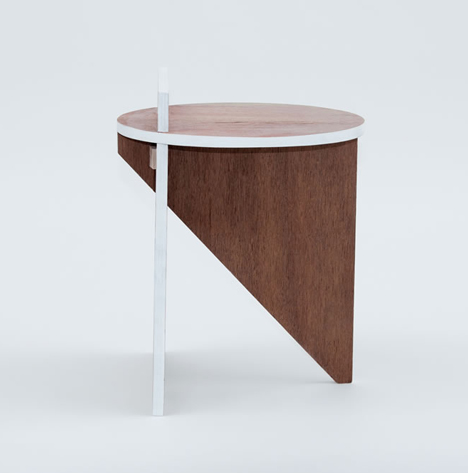
The multidisciplinary arts organization, Sirius Art Centre, based in Cobh, County Cork, has commissioned us through their internationally recognized artist in residency program to collaborate with Meitheal Mara.
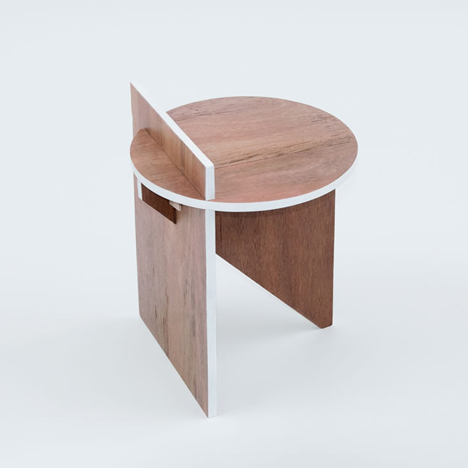
The boat-building techniques we have witnessed at Meitheal Mara were very different from the traditional artistry we have worked with in the past – they utilize rougher, unrefined and simple methods, while being strikingly efficient. Observing their work we were fascinated by how almost magically, in a matter of a few days, a vessel can be constructed which allows people to travel on the water.
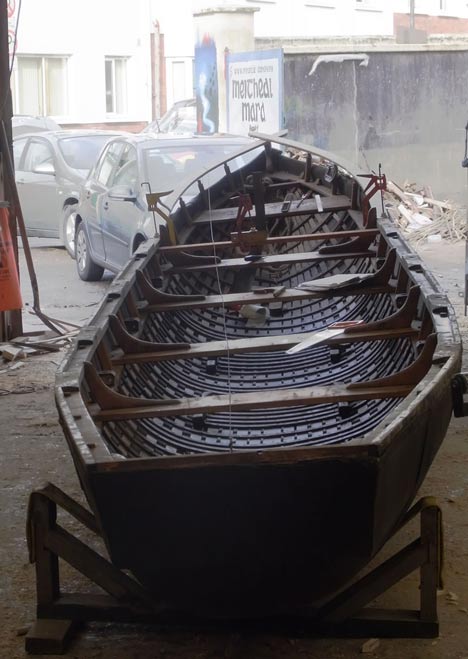
Due to the fact that the work done by the participants at Meitheal Mara is specific and created to achieve a functional end-result, without involving much attention to cosmetic details, and that the artisans are comprised of people with a variety of backgrounds, skills levels and working schemes, the project has turned out to be particularly challenging.
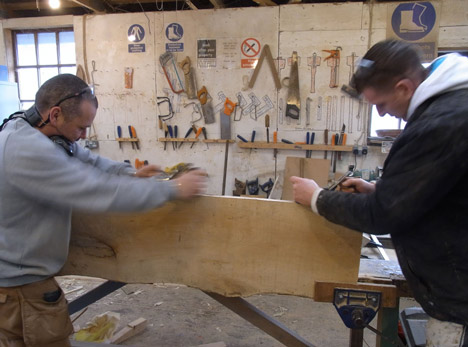
Building or redesigning a boat was never our intention for this collaboration. Our goal was rather to employ the naturalness, efficiency and functionality of Meitheal Mara traditional working methods and distil various various elements involved in the boat-building process in order to create new objects that are aesthetically far away from what Meitheal Mara does in their day-to-day work, yet always remaining focused on maintaining the link to their inspirational-origin.
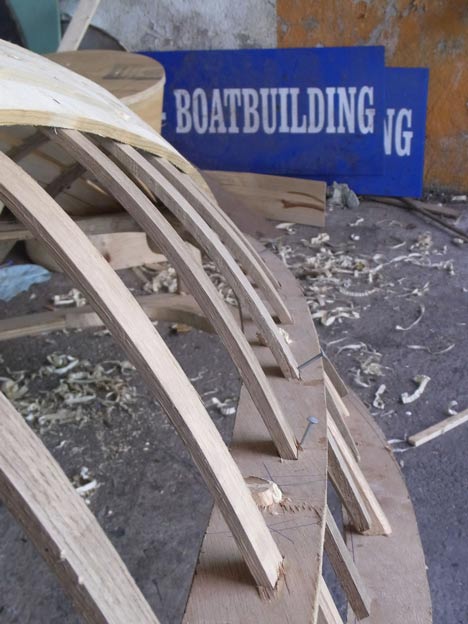
“Rule number one of a boatyard is that you never have enough clamps”. In times of need, improvised clamps are made of only two pieces plywood. These clever artefacts were our inspiration while developing the Side-Tables and Stools, by which the top plate is clamped between two vertical plates. The outer surfaces of the plywood are removed, revealing the less regularly placed wooden layers, making each and every piece unique.
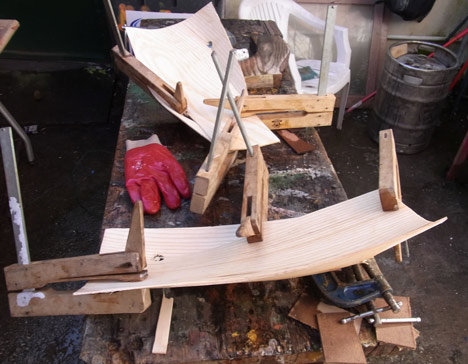
Steaming and bending of long and narrow wooden planks are common during the boat-building process and mostly used for covering the outer surface or support the boat’s frame. For the Fruit Bowls we have used shorter and wider planks of freshly cut Ash. Two long cuts make it possible to bend and twist the surface until the final form is achieved and fixed by using copper nails and roves. The white painted parts are a reference to the water line painted on the boats.
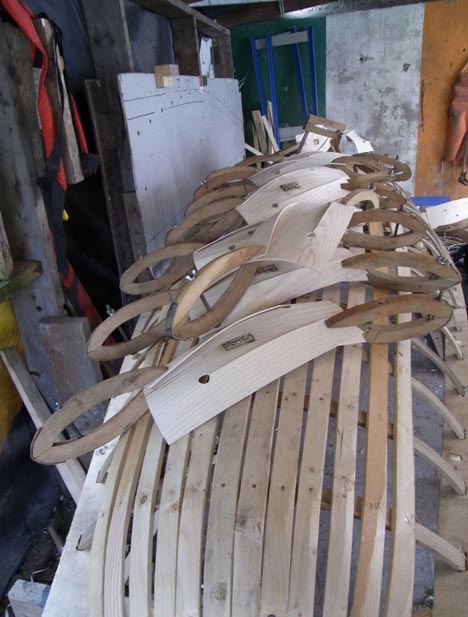
A scarph joint is used for connecting two different pieces of timber and is commonly used when constructing a boat. A well-made joint gives the boat-builders a chance to demonstrate their skill.
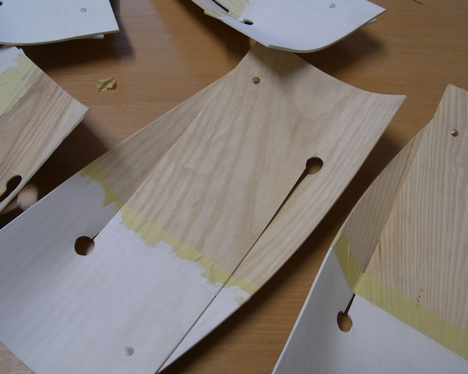
The Serving Trays are constructed by two pieces of Sycamore. Once the joint is fixed, the top is painted, and then a part of the upper surface is routed, revealing the beauty of the light-coloured timber and the joint.
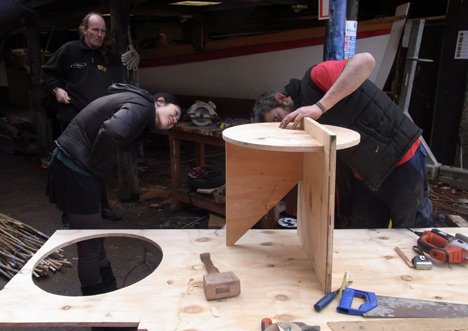
All timber used in the project is sourced from local, sustainable origins. All surface treatments are water-based and food safe.
